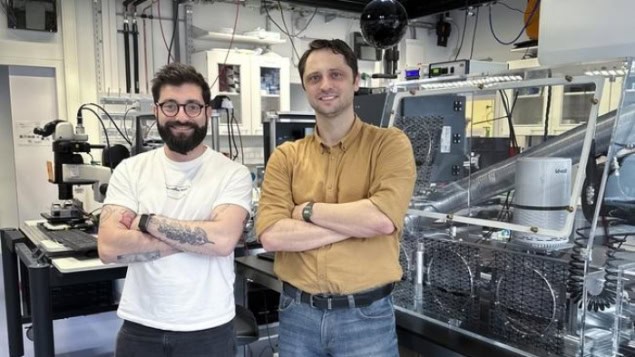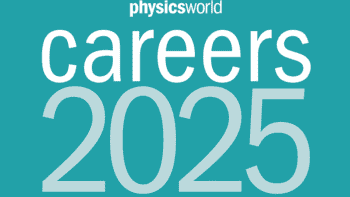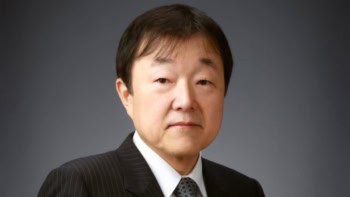
Physicists in Austria have shown that the static electricity acquired by identical material samples can evolve differently over time, based on each samples’ history of contact with other samples. Led by Juan Carlos Sobarzo and Scott Waitukaitis at the Institute of Science and Technology Austria, the team hope that their experimental results could provide new insights into one of the oldest mysteries in physics.
Static electricity – also known as contact electrification or triboelectrification — has been studied for centuries. However, physicists still do not understand some aspects of how it works.
“It’s a seemingly simple effect,” Sobarzo explains. “Take two materials, make them touch and separate them, and they will have exchanged electric charge. Yet, the experiments are plagued by unpredictability.”
This mystery is epitomized by an early experiment carried out by the German-Swedish physicist Johan Wilcke in 1757. When glass was touched to paper, Wilcke found that glass gained a positive charge – while when paper was touched to sulphur, it would itself become positively charged.
Triboelectric series
Wilcke concluded that glass will become positively charged when touched to sulphur. This concept formed the basis of the triboelectric series, which ranks materials according to the charge they acquire when touched to another material.
Yet in the intervening centuries, the triboelectric series has proven to be notoriously inconsistent. Despite our vastly improved knowledge of material properties since the time of Wilcke’s experiments, even the latest attempts at ordering materials into triboelectric series have repeatedly failed to hold up to experimental scrutiny.
According to Sobarzo’s and colleagues, this problem has been confounded by the diverse array of variables associated with a material’s contact electrification. These include its electronic properties, pH, hydrophobicity, and mechanochemistry, to name just a few.
In their new study, the team approached the problem from a new perspective. “In order to reduce the number of variables, we decided to use identical materials,” Sobarzo describes. “Our samples are made of a soft polymer (PDMS) that I fabricate myself in the lab, cut from a single piece of material.”
Starting from scratch
For these identical materials, the team proposed that triboelectric properties could evolve over time as the samples were brought into contact with other, initially identical samples. If this were the case, it would allow the team to build a triboelectric series from scratch.
At first, the results seemed as unpredictable as ever. However, as the same set of samples underwent repeated contacts, the team found that their charging behaviour became more consistent, gradually forming a clear triboelectric series.
Initially, the researchers attempted to uncover correlations between this evolution and variations in the parameters of each sample – with no conclusive results. This led them to consider whether the triboelectric behaviour of each sample was affected by the act of contact itself.
Contact history
“Once we started to keep track of the contact history of our samples – that is, the number of times each sample has been contacted to others–the unpredictability we saw initially started to make sense,” Sobarzo explains. “The more contacts samples would have in their history, the more predictable they would behave. Not only that, but a sample with more contacts in its history will consistently charge negative against a sample with less contacts in its history.”
To explain the origins of this history-dependent behaviour, the team used a variety of techniques to analyse differences between the surfaces of uncontacted samples, and those which had already been contacted several times. Their measurements revealed just one difference between samples at different positions on the triboelectric series. This was their nanoscale surface roughness, which smoothed out as the samples experienced more contacts.

Triboelectric device reduces noise pollution
“I think the main take away is the importance of contact history and how it can subvert the widespread unpredictability observed in tribocharging,” Sobarzo says. “Contact is necessary for the effect to happen, it’s part of the name ‘contact electrification’, and yet it’s been widely overlooked.”
The team is still uncertain of how surface roughness could be affecting their samples’ place within the triboelectric series. However, their results could now provide the first steps towards a comprehensive model that can predict a material’s triboelectric properties based on its contact-induced surface roughness.
Sobarzo and colleagues are hopeful that such a model could enable robust methods for predicting the charges which any given pair of materials will acquire as they touch each other and separate. In turn, it may finally help to provide a solution to one of the most long-standing mysteries in physics.
The research is described in Nature.



